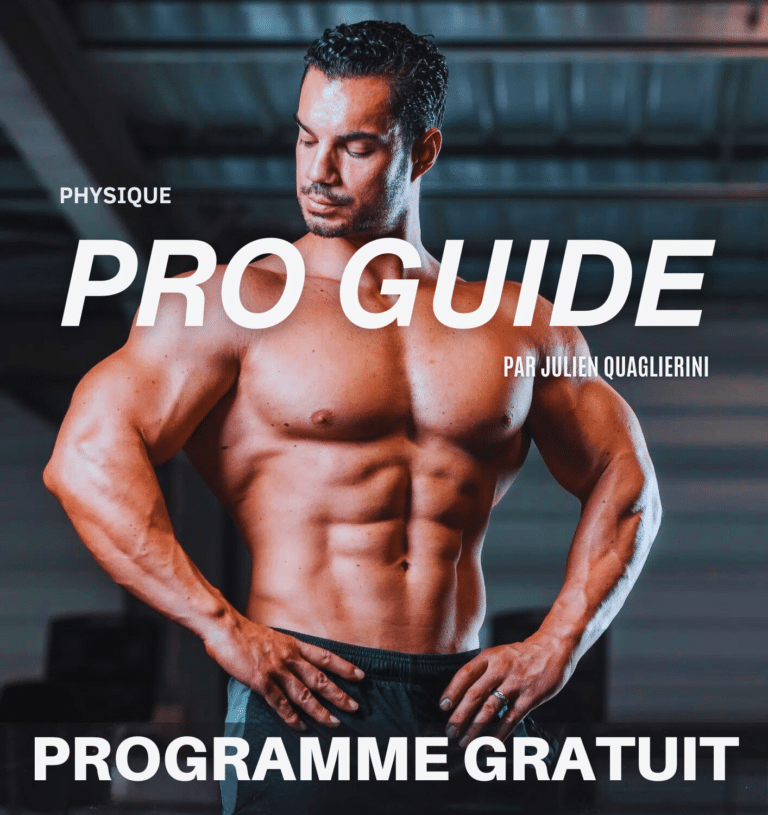Time under tension, a good technique to progress
Fitness and bodybuilding athletes often encounter periods in their lives when they feel that their athletic levels are stagnating. Indeed, during bodybuilding sessions, they have the impression that they are no longer progressing and despite regular training, they no longer know what to do to gain muscle and mass. They then seek new techniques to progress.
This is when they use the TST method called time under tension during their weight training exercises.
Contents
What is time under tension?
But then, is time under tension an effective technique for gaining muscle mass during strength training? When should it be used? To what extent is this method used in a bodybuilding program and what are the expected results? This is what we will see in detail in this article.
It is a technique of progression which consists in training differently for a more optimal gain of muscle, thus making it possible to break the routine thanks to a predefined tempo which will make gain in effectiveness.
The time under tension is the period during which the muscle is solicited with a precise load during a physical exercise, it plays a role in the muscular growth which we call hypertrophy.
The time under tension method consists of resisting the duration of the concentric and eccentric phase of the movement for several seconds. This is called tempo. This increases the difficulty of the exercises.
Used most often by bodybuilders and strength trainers, some coaches in the weight room often integrate this TST method to help practitioners gain muscle and thus achieve sarcoplasmic hypertrophy. However, when training, it is important not to focus too much on training one muscle to the detriment of the other. This will require the antagonist muscle to overcompensate for the effort, causing damage such as tendonitis, muscle tears etc.
It is important not to focus too much on the intensive training of a single muscle group if the athlete does not want to stagnate. It is more beneficial for the athlete to focus on polyarticular exercises, which develop the muscles harmoniously. The time under tension can be done with all the exercises, as well with the free weights, dumbbells or bar as the machines. Thus, the time under tension leads to the breaking of muscle fibers (and thus to hypertrophy and soreness) which when they repair themselves call upon protein synthesis to rebuild the muscle and thus, strengthen and grow.
The mass gain programs all contain time under tension exercises, each session is a moment during which the concentric, eccentric and isometric phases appear, conducive to an increase in muscle volume.
The different phases
The concentric phase
It is a phase during which the muscles used are in tension, i.e. they retain a load by bringing it towards the targeted muscle. The perfect example would be when an athlete brings a dumbbell up and down to build up his biceps.
The eccentric or negative phase
It corresponds, on the contrary, to the relaxation of the muscles to lower the load. Always with the same example, this time, the sportsman lowers the dumbbell from top to bottom in order to relieve his biceps.
The isometric phase
This would be defined by maintaining a position of muscular contraction without moving by soliciting specific muscle fibers for muscle development, as in the example of the plank (sheathing).
These phases push the muscle cells to contract in order to stimulate the different muscle groups: triceps, pectorals, biceps, glutes, abs or quadriceps with exercises such as push-ups, dips, rowing, squat, curl, etc.
Here are the three important information to remember in correlation with weight training time under tension in order to have dry muscles:
- The number of times the gesture is repeated using a load
- The intensity of the gestures
- The duration of a series of repetitions
Number of movements made during the muscle strengthening exercise :
- Approximately 7 to 15 repetitions for a normal weight training session
The intensity of the gesture in order to reach the state of muscular congestion:
- 60 to 90 %
Time required for each set for a good muscle gain:
- 30 to 60 seconds
We will see later on with more precision which tempos to adopt according to the needs of the athlete.
Why can this technique be used?
As mentioned above, the reasons are mainly to gain muscle quickly and acquire more strength while alternating periods of muscle recovery. In practice, how to increase your muscle mass?
It also allows you to shock your routine when you realize that you haven't been making progress for a while.
For a quick gain of mass, it is necessary to make series of movements to contract the muscles and destroy the muscle fibers which will be rebuilt by being thicker and stronger, thus the muscular tissue being inflated, the gain of mass is assured. Don't forget to always warm up well before starting your training session and to follow the exercises.
There are other different methods and tools for building muscle in the gym with many training intensification techniques :
- Dropset or degressive
- Superset, Biset, Triset, Giant series
- pyramidal
- pre and post fatigue
- Forced, assisted, cheated rehearsals
- Partial repetitions
- Negative or eccentric repetitions
- Superlent (long and continuous on-time)
In order to build muscle quickly as well as to firm up during exercises, the athlete must take into consideration the phases of time under tension which are, as mentioned above, the concentric, eccentric and isometric phases in order to maximize the development of his or her musculature for bodybuilding, among other things.
There are several ways to tone up according to your needs, whether it is in full body, half body or split
In order to be able to understand each other among bodybuilding athletes, a coding system has been put in place for each specific need.
For example:
- The code 3010 corresponds to an exercise to reach hypertrophy (for example for a bench press, this means 3 seconds to lower the bar, no time off at the bottom, 1 second to raise the bar, no time off at the top of the movement).
- The code 4211 corresponds to an exercise to work on endurance
- The 5010 code corresponds to a training to develop strength
Let's take the example of the bench press exercise with a barbell to achieve hypertrophy with tempo coding 3010 :
- 3-Eccentric phase which corresponds to the descent of the bar, the bar goes down towards the pectoral muscles
- 0-Isometric phase A which corresponds to the finish position, the bar touches the pectoral muscles
- 1-Concentric phase which corresponds to the raising of the bar, the bar is pushed upwards
- 0-Isometric phase B which corresponds to the starting position, the bar is well up, the arms are well stretched
Here is a table of requirements, tempos, sets of repetitions and recovery times:
| Objective and time under tension | Number of repetitions | Recovery time | Tempo |
| STRENGTH less than 30 sec | 1 à 6 | 3 to 4 minutes | 5010 |
| HYPERTROPHY 30 to 60 sec | 6 à 15 | 1 to 2 min 30 | 3010 |
| ENDURANCE 60 sec min | 15 and over | 1 min | 4211 |
Depending on your body type, weight and needs, you can put more emphasis on the concentric or eccentric phases. It all depends on your goal.
It should be taken into consideration that these trainings will only be effective if you respect rest days.
Is this technique suitable for all bodybuilders?
All practitioners with different morphotypes can practice with this technique, (ectomorphs, mesomorphs and endomorphs).
For this, you must also have a balanced diet according to your physical condition and metabolic needs. A good diet during the practice of exercises to become muscular is essential to progress.
It all depends on your goal and your situation. If you are in dry periods or mass gain period, this will greatly influence how you gain muscle during time under tension exercises.
The two essential elements to take into account are the distribution of macronutrients and the total number of calories per day according to your situation.
In order to be able to follow a training with the time under tension technique in dry periods, it is better to elaborate a precise program according to you, your objectives, your age and your schedule.
A weight loss diet should not be synonymous with frustration.
To lower glycogen levels and lose weight, avoid caloric foods that contain too many carbohydrates.
Eating a healthy diet, based on good carbohydrates (basmati rice, wholemeal bread, sweet potato bread, oatmeal), proteins (white meat such as chicken breast, white fish) but also good fats (avocado, nuts and almonds, rapeseed oil, salmon) is very important to avoid injury and being in a catabolic situation.
A few nutritional tips for weight gain
Do not hesitate to prepare shakers in which you add whey protein or vegetable protein if you are vegetarian. You can also mix in oatmeal (slow sugar useful for mass gain) and a banana for example to provide good carbohydrates. Take your BCAA which are essential amino acids (leucine, isoleucine, valine) during your training and possibly add a dose of casein and glutamine at bedtime.
Some meals will be based on anabolic foods such as red meat and salmon (to be consumed in moderation). Products with a high glycemic index should only be consumed after training, the rest of the day we will prefer foods with a low glycemic index.
The caloric intake should be higher than the maintenance calories and it will be useful to supplement with vitamins and minerals to help rebuild the muscles and prevent catabolism.
Don't hesitate to seek professional advice to establish an effective eating plan to build muscle quickly.
Finally, this article is intended to help those who would like to know how to develop their muscles and who no longer know how to go about it. It is necessary to redefine the bases concerning the daily caloric needs as well as the maximum load that you can carry during the exercises in order to avoid the muscle catabolism or even problems of muscular tears.
Don't forget that to have a good muscular increase, the training as well as the food, without forgetting the days of rest, are essential if you want to progress quickly.
Other articles to read :
What are the signs of overtraining?înement?
Does the anabolic window really exist?
All about tempos in bodybuilding












julien, I really appreciate the articles on your site which are a mine of information for all of us.
bravo for your career and the content you provide and of course this article on time under tension
Thanks for taking the time to leave a comment 🙂
Hi julien
how can we do when we work in slow tempo and we don't feel the muscle?
thank you for your answer if you have the time
Hi, if you can't feel the muscle when you work even lightly and slowly, you should probably rework the technique to really target the muscle you are trying to develop. Try stretching the muscle in question because if you can feel the muscle when you stretch it, you should feel it when you contract. You can also try electrostimulation which will also allow you to feel a specific muscle you have chosen.
A source of information as well as a source of motivation. I can see you on your videos working lighter in intensity and using this method. If young people could work on this same spirit rather than putting heavy absolutely without even feeling their muscles. In any case, great work. Keep up the good work
Thanks for your comment. After more than 22 years of practice I have tested many methods and indeed lowering the loads and working in continuous tension while really feeling the muscle you are trying to develop is much more effective than putting heavy at all costs if you are trying to gain muscle.
Hello
I have a weakness in my left leg compared to my right (2 cm difference).
how to work unilaterally to rectify this deficit
thank you
When the weakness of a leg comes from the aftermath of an injury, as it did for me when I had cruciate ligament surgery, unfortunately the volume and strength of this leg never comes back like the other leg, even 15 years later for me. You have to keep working with both legs at the same time as well as unilaterally, and eventually do 2 more reps on the weak leg.